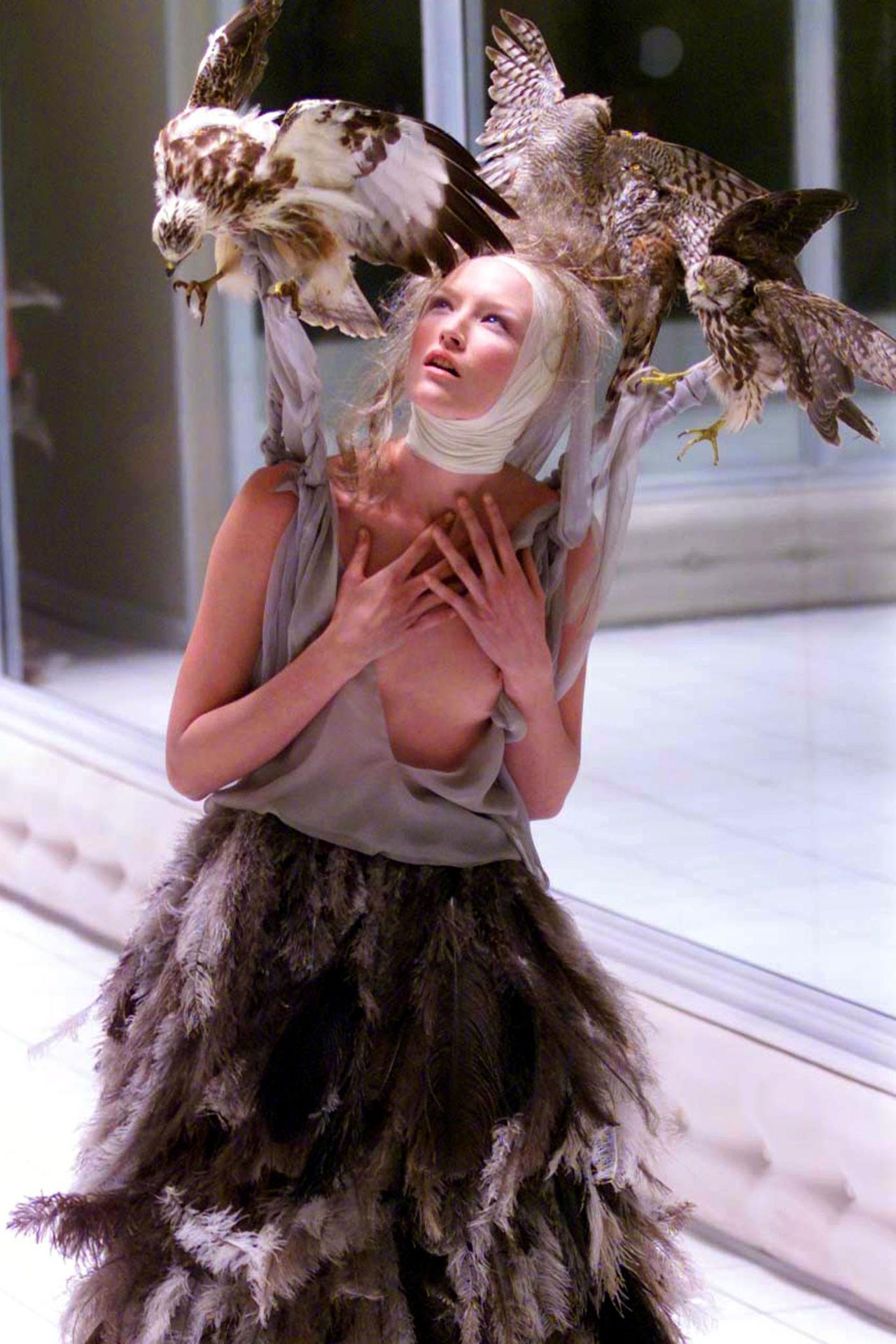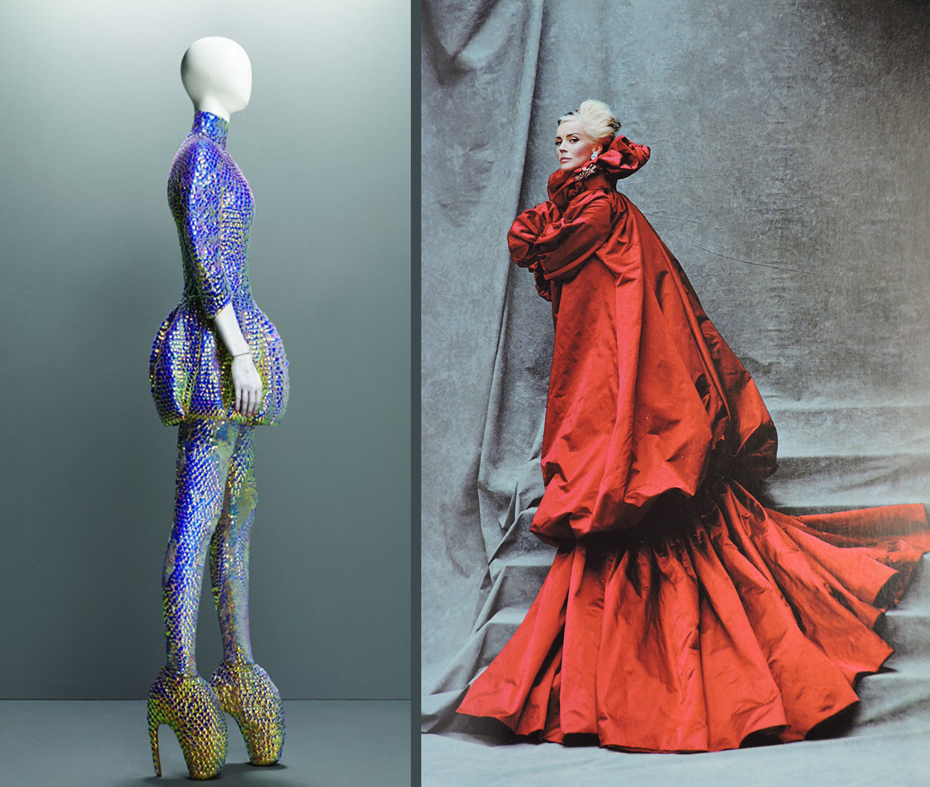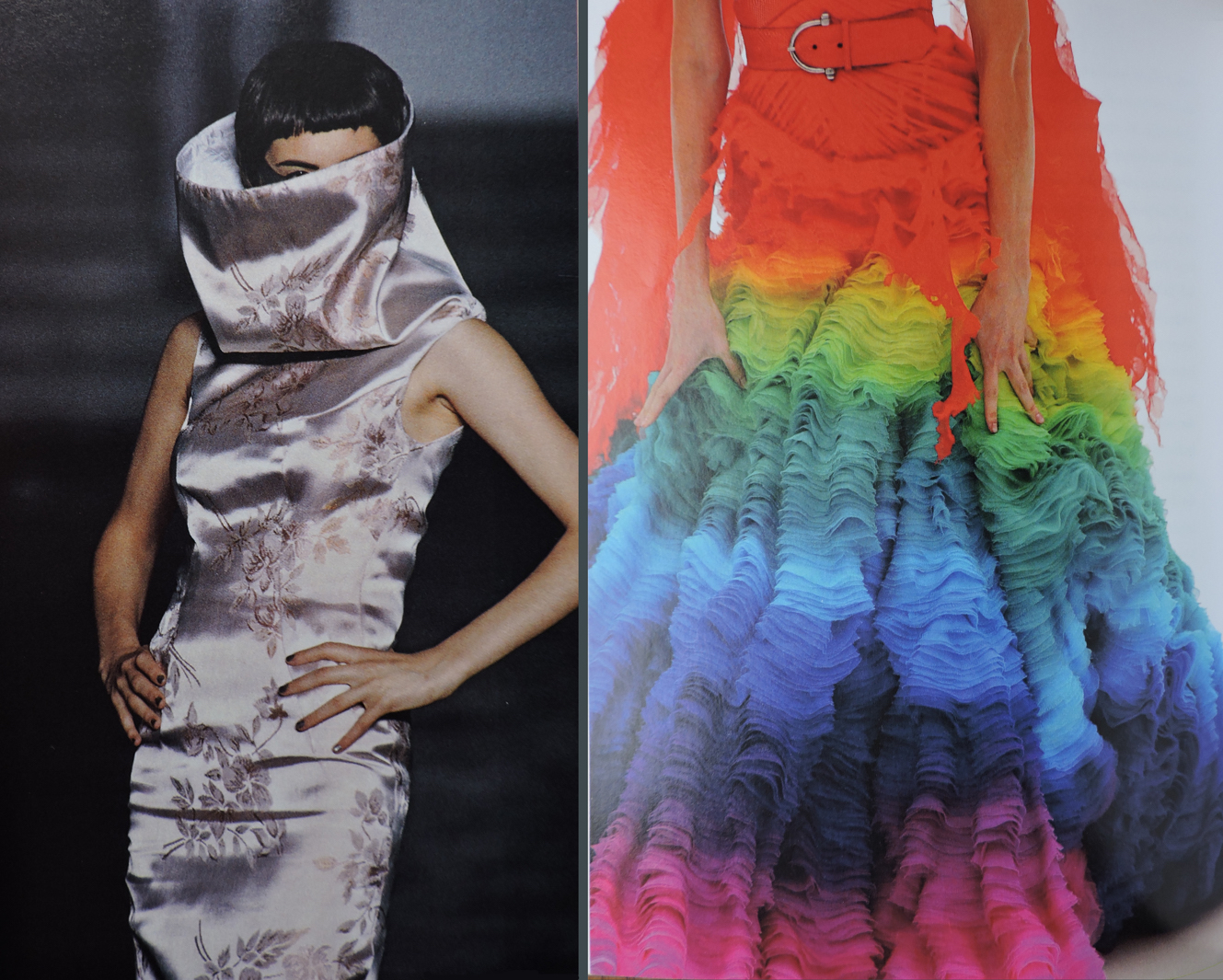
Model Natalia Vodianova poses in the Oyster dress from Alexander McQueen’s 2003 Spring:Summer collection ‘Irere.’ Photo by Peter Lindbergh
I recently came across the excellent bio, Alexander McQueen: The Life and Legacy by Judith Watt, Harper 2012. McQueen (1969-2010) was a fashion god who jettisoned clothing into an age of everyday spectacle and jarring culture clash. McQueen’s runway shows were multi-media extravaganzas that dumbfounded critics and electrified the fashion world. Watt’s biography succinctly overviews the designer’s various collections, interspersed with memories from colleagues and friends. I was struck by the range of McQueen’s inspirations, from punk rock to science fiction, from London’s gay club culture to Scottish history, from the popular mythology of Jack the Ripper to the heroics of Joan of Arc, from the horror films of Kubrick to the romantic films of Hitchcock, from installation art to the paintings of Goya, Bosch and Van Eyck, from modern materials to the natural forms and patterns of birds, butterflies, flowers, snakes, seaweed, moss and ice.

Low tech, high tech. On the left, plastic and mud dress from Nihilism show, Spring/ Summer 1994. On the right: LED cyborg look, AW 1999-2000.
In his early shows, when McQueen had little money for materials, he cut clothes out of clear plastic bags, sewing the pieces in layers and placing red mud and water between the layers to give a look of splattered blood and flesh. While the plastic revealed the models’ bodies, the mud obscured areas, adding a sense of trauma and mysterious inner life. In his rebellion from the norm, McQueen combined ripped clothes and tailored suits, elongated the torso and created strange cocoon-shaped silhouettes. He experimented with unusual materials such as cigarette butts in place of sequins, and had princess dresses splattered on stage with robotic paint machines. Later works featured stuffed birds in head-dresses, parachute capes billowing behind models in elevated wind tunnels, plaster-coated corsets, body armour and Armadillo shoes. Even the Alexander McQueen label attached to clothes was unusual, featuring a lock of hair encased in plastic.

Model Kate Moss strikes a dramatic pose in the glassed-in runway for the VOSS collection, Spring Summer 2001
His collections often had a narrative element. He turned runways into winter landscapes, dance marathons and glassed-in mental asylums. “Irene,” Spring/ Summer 2003, started with a film clip of a shipwrecked woman. She washes ashore in a spectacular oyster dress, setting off encounters with natives of South America, models adorned with red and white face paint, gold-seeking Spanish conquistadors in tight fitting leather body suits, and clothes saturated with the colours of the Amazon rain forest. “Plato’s Atlantis” imagines the aftermath of global warming, with humans evolving into semi-aquatic creatures to adopt to a new water-based world.

Jellyfish and fairy-tale. On the left, McQueen’s “jellyfish dress” from Plato’s Atlantis, S/S 2010. On the right, Daphne Guiness wears a red silk coat pleated at the cuff from “The Girl who Lived in the Tree” collection, F/ W, 2008-09, photo by Michael Roberts for Vanity Fair.
The site AnOther posts an interview with Andrew Bolton, curator of “Savage Beauty” at the Met, 2011. Bolton explains the title of his McQueen retrospective: “Originally the idea came from a book called The Savage Mind by Claude Levi-Strauss, in which he describes two different types of people: ‘the bricoleur’ who is a jack-of-all-trades and ‘the engineer’ who is an artist. I thought both identities tally with McQueen. He looked everywhere for his inspirations and in that sense he was a bricoleur; but he was also a wonderful artist who had a great sense of virtuosity and incredible conceptual complexity, which was shown through his runway presentations. McQueen merged those two identities and that is where the title comes from. Also, in most of McQueen’s collections there were these dichotomies, whether it was to do with beauty and terror, lightness and darkness or life and death. The title is also a play on these contrasts.”
I also recommend the film McQueen and I. Though it’s a rather sad story of the friendship between McQueen and fashion editor Isabella Blow, the documentary offers insights from collaborators and features clips of several shows that hint at McQueen’s unique vision and compelling sense of theatre.
